A perfect storm has gathered among Israelis and Palestinians. Amid yet another calamity — the loss of life, the loss of human dignity, the fear — the undercurrents of the conflict have reemerged. This is not merely another round of the Israel-Hamas war. As bad as previous rounds were, the past few weeks have managed to touch and inflame almost every core aspect of the century-old Israeli-Palestinian conflict: national narratives and grievances, religious sanctity and symbols, and communal violence not seen in many decades, bringing with it the base, awful human fear of one’s own neighbors and the even-worse impulse to strike them first. All this is wrapped in the all-too-familiar thunder of bombs and rockets, with millions of lives abruptly interrupted and endangered, children running to bomb shelters or cowering in fear if they have none, and many lives already lost.
I mean this not merely as a lament, though there is call for that as well. This perfect storm affects the calculus of decisionmakers and the judgment of observers on all sides in mostly the wrong ways. People are rushing to defend not just their own people, but symbols seemingly under attack, ready to believe and spread their worst fears and misconceptions, and eager to save face and pride where so much else is shaking. Tribal lines — national, religious, communal — are reaffirmed on the ground while too many abroad cheer on, common humanity forgotten.
Within the maelstrom of national aspirations and grievances, life has always continued. At times, it truly flourishes. Daily coexistence, we often forget, is far more common than conflict. Peace, the unheralded but real peace of life in between breaking news and international attention, is the norm, not the exception, imperfect as it is and fraught with deep structural problems. It is always precarious, delicate, easily rattled by those who wish to do so — and they are many — but it continues.
The past few weeks, however, seem to have brought to the fore every incendiary ingredient imaginable. In Jerusalem, a decades long attempt at a private and selective “right of return” came to a head. Jews have been trying to reclaim Jewish houses lost when Jordan took over the eastern part of the city in 1948 in what is now part of the Sheikh Jarrah neighborhood. Eviction loomed over Palestinian residents — themselves dispossessed in 1948 from other homes in Israel — who had lived there for decades. On May 10, the Israeli supreme court was to rule on the case of ostensibly individual — yet implicitly very national — property rights, but it postponed for fear of that national dimension in times of conflict. Every deep-seated image of dispossession, the Nakba of 1948, and the current imbalance of power resurfaced, with the Palestinian Nakba Day, no less, commemorated on May 15.
Nearby, Muslim youth clashed daily with police outside the Damascus Gate of the Old City at the evening breaks of the Ramadan fast, with police using their typical heavy hand, only to shift in an apparent withdrawal. Just a bit farther east and up the hill, global religious symbols seemed to be at stake. In and around the Al-Aqsa Mosque, one of Islam’s holiest, police faced demonstrators. With astoundingly poor judgement — so much that some saw deliberate provocation — they entered the mosque, during Ramadan, armed and even throwing stun grenades, creating images that reverberated from Morocco to Indonesia and beyond.
1967 was not to be neglected. Jerusalem Day, in which Jewish Israelis commemorate the reunification of the city in June of that year, routinely includes a March of Flags. This year it coincided with the last week of Ramadan. The police made another poor decision to allow the usual route through Damascus Gate, the locus of so much unrest, only to make a last-minute reversal to divert the march.
All this gave an opening to Hamas, eager to wrest control of events and claim the mantle of defender of Al-Aqsa. Starting with a massive rocket barrage onto Israeli cities and towns, Hamas surprised Israel not only with its appetite for conflict now but also with its improved military capabilities. In the first night Hamas demonstrated far greater range than in the past, putting most of Israel’s population under concerted fire. It clustered its barrages such that some, though not many, rockets penetrated Israel’s Iron Dome defense systems and hit homes in Israel. Killing a handful of Israeli civilians and sending millions to shelters gave Hamas an early success, but left Gaza, again, at war with a far superior power.
Hamas’ perceived early success is not just a matter of public relations. Israel’s other main foe on its borders, the far better-armed Lebanese Hezbollah, is of course watching closely, especially at the possibility of saturating Israel’s missile defenses. A small country, surrounded by enemies not only in slogan but in practice, Israelis see the possibility of multi-front war with precise weaponry and shudder. The more capable the weapons of its foes, the more incentive Israel has to strike preemptively. Hamas’ new capabilities are also a reason the Israeli military hopes to degrade its fighting ability before a ceasefire is called.
The most startling images of all, however, are of communal violence inside Israel. Not seen in decades, this threatens to fray the seams of the delicate, uneasy, balance between Israel’s Jewish majority and the 21% of Israeli citizens who are also Palestinian. In between sirens calling them to shelters, Israelis were glued to images of mobs and lynching in Lod/al-Lidd, Bat Yam, Acre, Tiberius, Jaffa, mixed Jewish-Arab cities throughout the country. It evokes some of the worst traumas of violence over the decades, the long bloody list of murders and attacks indelibly etched in the memories of those who were spared.
The Israeli daily Yediot Ahronot led its print edition on May 12 with a headline evoking Arab attacks on Jews in British Palestine 100 years ago, known as the “troubles of Tarpa,” the Hebrew calendar year corresponding to 1921. The heading read “the troubles of Tashpa,” the current Hebrew year. Mobs of vigilantes in search of random victims whose only crime was their identity, burning property, attacking synagogues and mosques, echoed traumas of centuries.
The images of communal violence might be seen by some abroad as supposed evidence of the unviability of Israel writ large. I’d suggest no one jump to any conclusions. Most of Israel remains functional, and order will be restored. More importantly, there are many voices vocally pushing back. They’ve received less attention, but even amidst it all, Jews and Arabs have been helping each other, demonstrating in solidarity for coexistence, and even saving each other from harm. It is trite to point out, but necessary: the vast majority of Israelis want to coexist. The challenge for Israel’s leaders — all of them — is to see the problem for what it is: not just a matter of policing, necessary as it is, but also of mutual respect, equality, and a government that asserts both clear state authority and the clear mission of the same state to serve all its citizens.
Still, it’s hard to overstate the severity of the crisis. It did not come out of the blue, nor is it just a product of social neglect. Jewish-Arab relations inside Israel in recent years have seen a mix of advancement in some important social and economic indicators as well opportunistic and reckless use of the fissure by politicians, starting with the prime minister. With typical duality, Benjamin Netanyahu has used majority-minority animosity politically for years, even while his own governments have at times made real efforts to close the socioeconomic gaps. He engineered the entry of far-right extremists to the Knesset — some of who are now actively inciting the violence, according to Israel’s chief of national police. And then, when politics called for it, Netanyahu also brought some Arab leaders back into the fold, attempting to form a government with support from the Islamic Ra’am party. The door open, his opposition nearly did the same in the last days before Hamas entered the scene, when it was finalizing a coalition agreement among parties from the hard right to the hard left, and with Arab support. The violence has now made that broad a tent — stretched already — untenable, and left the Jewish-Arab rift at its worst point in decades.
The bloody pattern continues, but all is not the same. The tribal lines evoked in this violence, this perfect storm of grievances and fears, will remain when the guns finally fall silent. The destruction needs to end, urgently. Its possible return will continue to loom as all are left to contend with strong, primal but destructive tribal temptations for those in the land and for those observing from abroad, too often ready to inflame and reaffirm divisions. Now is a time, if there ever was one, for a call for simple coexistence, for the value of human life, human dignity, and humility.

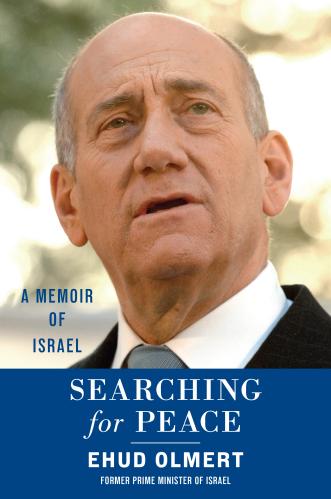
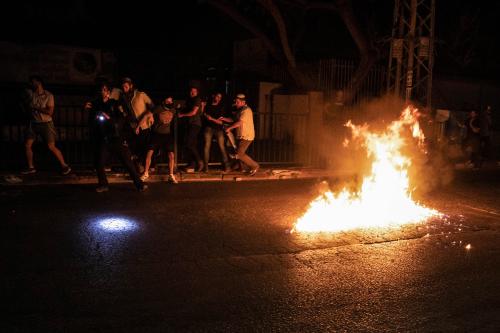

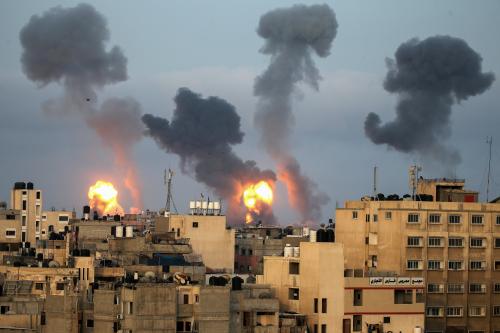
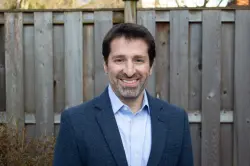

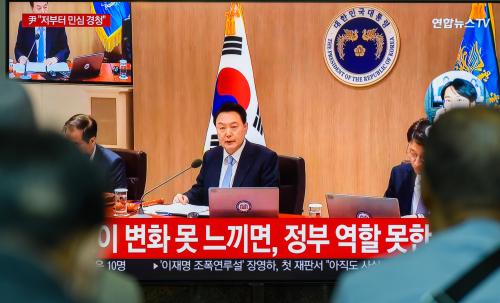
Commentary
The perfect storm for Israelis and Palestinians
May 15, 2021